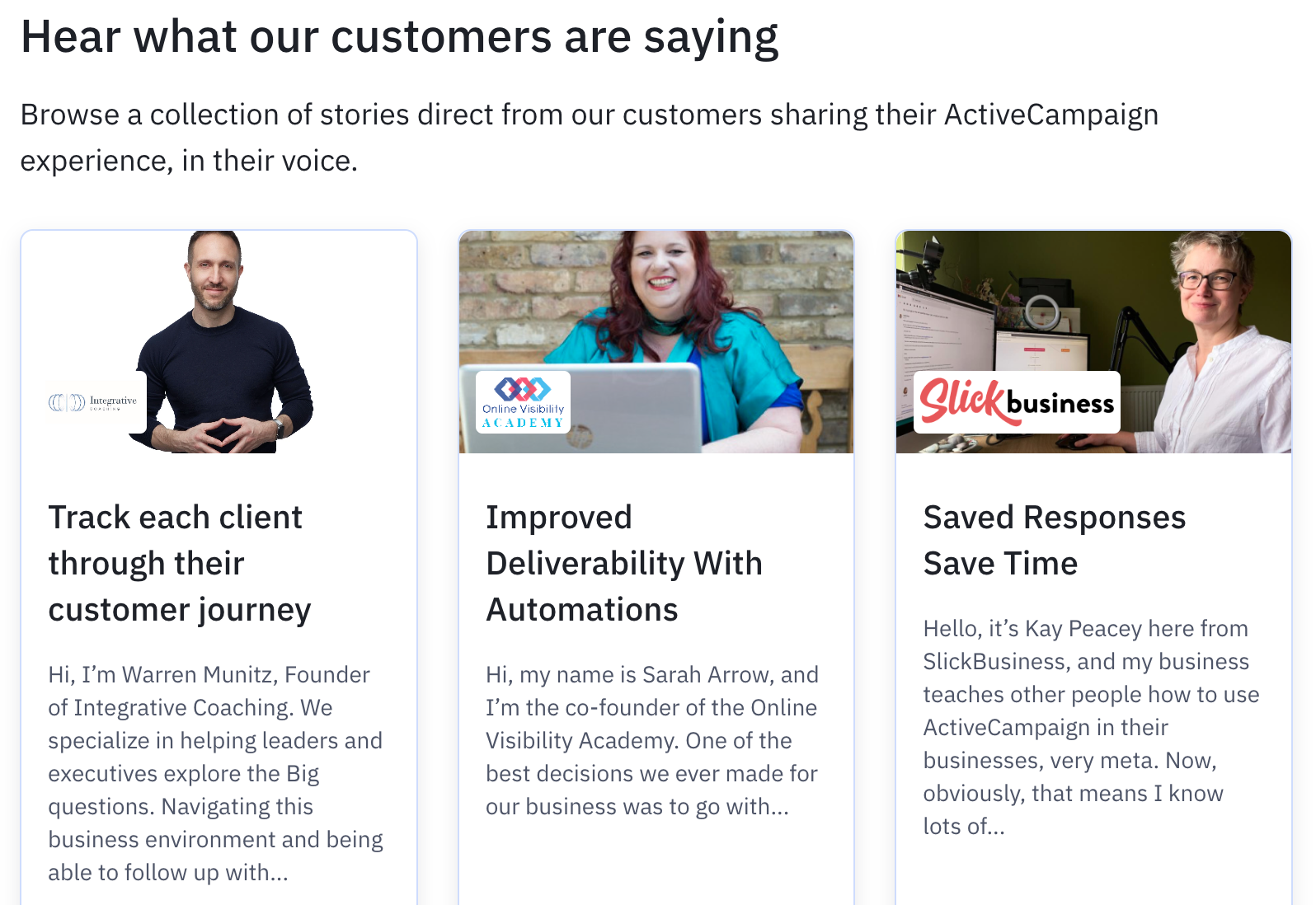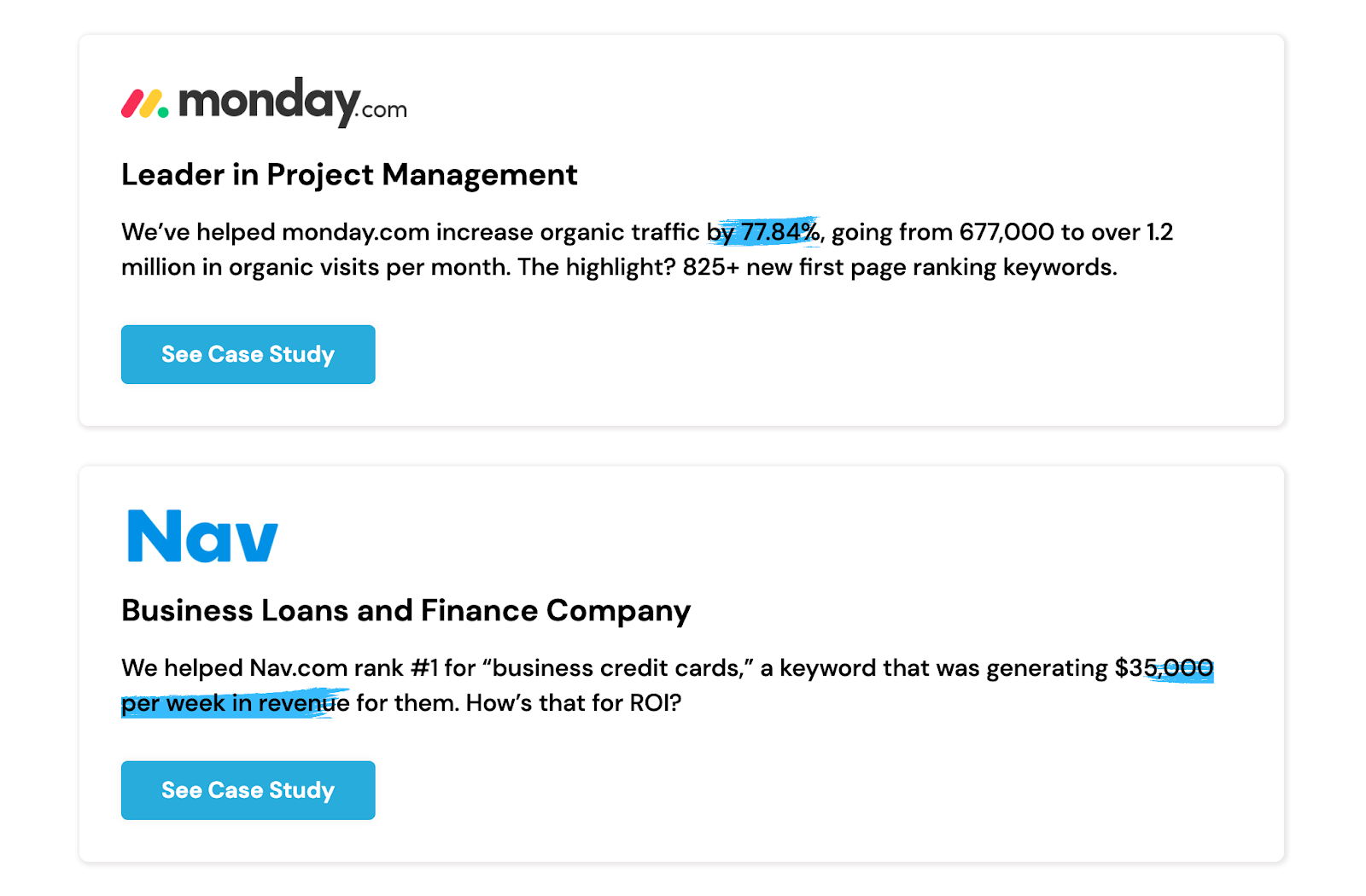Your brand image and reputation are your business’s most valuable assets and have a direct impact on the value of your company.
So if a customer is satisfied with the experience they’ve had with your brand, you want to harness that information to show potential customers the value that you bring to the table. But if you’re not asking for customer testimonials or using them ineffectively, then all of the customer satisfaction is going to waste and not adding anything worthwhile to your brand reputation.
What is the importance of customer testimonials?
As humans, we often turn to social proof to help influence our buying decisions. Social proof is the idea that people are more likely to do something if others have already done it and had a positive experience. Customer testimonials are an excellent example of social proof and offer several benefits for any organization.
1. Build trust
Unlike other forms of advertising, customer testimonials come from real people — your customers — so they’re authentic and honest. 81% of consumers state that they trust the advice of friends or family over the advice of a business, showing that customer testimonials have more value in promoting your business than ad copy ever will.
The fact that these testimonials come from real people who have actual experiences with your company means that you can use them to demonstrate the value of your product or service. Customer testimonials prove that your product or service delivers on its promises, which will ultimately help convince more people that they can trust what you offer.
Trust is especially important for expensive products or services. When someone buys something expensive, they want to know that spending their hard-earned money is worth it.
2. Establish credibility
Customer reviews and testimonials are the ideal solutions for showing that your brand is credible. When you’re trying to sell something, it’s essential to make sure that people know it’s not just you who thinks your product is the best thing ever — but that other people do too.
So when a new lead comes across your product, they can see from other customers’ experiences that your product is worth their attention. And 100%, not a scam. In short, customer testimonials help demonstrate why people should buy from you instead of your competition, building credibility for your brand.
3. Increase sales
There’s no denying it: testimonials are one of the most powerful tools you can have in your marketing arsenal. After all, nothing speaks louder than a satisfied customer.
Displaying customer testimonials on your website can help you increase conversion rates and might give you valuable insights for your predictive lead scoring. In fact, customers are 34% more likely to convert when they see a testimonial on a sales page. And the statistics get even better with expensive items. Customer testimonials placed next to more expensive products can increase conversion rates by 380%.
Here are seven tips for using customer testimonials and turning them into an asset for your business.
7 Effective Ways To Use Customer Testimonials
Harness the power of customer testimonials to build trust, establish credibility, and increase sales. Let’s take a closer look at how to effectively use customer testimonials to achieve these goals.
1. Set up a system for collecting reviews
The first step to using customer testimonials is to set up a system for collecting them. Doing so will make it easy for you to capitalize on the benefits of testimonials and encourage happy customers to share their thoughts about your brand.
Consider what types of reviews you want to collect:
- Short-form feedback (e.g., star ratings)
- Longer written reviews
- Case studies
- Video reviews
Once you have a vision in mind, consider the actual process of collecting these reviews. For short-form feedback, you can leverage third-party providers like Trustpilot and Clutch. Or you can create a custom form to add to your website and collect your own first-party data.
On the other hand, if you are looking for written and video reviews, consider contacting your customers via an email marketing campaign to see if they are willing to provide a testimonial.
2. Embed video testimonials on your website
Video testimonials are more memorable than written ones and show the benefits of your products in action.
Luxury Presence, a specialist in SEO services for real estate companies, uses short and authentic testimonial videos on its website. By showing real people talking about their work’s quality, they connect with their potential clients and increase their trust.
Embedding videos directly into their site will also help boost traffic from search engines by ranking higher on the search engine results pages (SERPs).

3. Use real people, not stock photos
A picture is worth a thousand words, right? That’s why having real people in your testimonials can be so powerful. However, you don’t want to use just any random person.
You’ll want to make sure that the people who appear in your testimonials align with your target audience and preferably hold some authority in their niche.
Brett Helling, a Web Properties Developer, needed a way to manage content for his portfolio of ten websites. He uses Wordable and now spends less time on the little things and gets more content published.
Honest reviews from real customers and industry experts hold their weight in gold.

4. Include customer reviews on product pages
With proper marketing software, it is as simple as creating a dedicated “Product Reviews” section on your product page where you can display customer reviews in an organized way.
Positive customer reviews with specific details help generate more credibility and trust. Take American Trucks as an example. They display customers’ reviews about truck wheels by measuring important characteristics of the product, such as “onroad ride quality,” “snow traction,” and “bang for your buck.”
An overall five-star rating is a fantastic review, but the more information your reviews provide, the easier it is for a new customer to make an informed buying decision.

5. Show some variety in the types of customers you showcase
You want to show a variety of customers. You should have testimonials from people in other industries, who use different products and services from you, and who work at different-sized companies.
If someone is looking for testimonials to help them make their purchasing decision, they’ll likely be curious about what other customers say about your company. If all the testimonials are from people with very similar backgrounds or experiences, it can make them seem less credible because there’s no diversity.
ActiveCampaign does an excellent job showing diversity across small-to-mid-sized businesses and the results of using their software. The more examples you can include, the better.

6. Integrate third-party reviews
Integrating third-party reviews is an excellent way to boost your credibility. Third-party reviews can help you rank higher in search results, as Google and other search engines tend to give more weight to credible sources. According to a study by Bright Local, the highest ranking local businesses pages had more third-party reviews than the lower ranking pages.
Not only does including third-party reviews help your SEO, but adding customer reviews directly to your website can help build trust with your potential customers and improve their perception of you as a company or service provider.
For example, these reviews are from an investment advice website and offer a glowing opinion on the quality of products and services provided by the company. After reading these reviews, new customers will have no problem trusting the quality of this investment service.

Numerous platforms are available to secure third-party customer reviews, including Trustpilot, Clutch, G2, TripAdvisor, Yelp, Glassdoor, etc.
7. Create case studies
Use case studies as a marketing tool to highlight past results and show potential customers the value you provide.
Case studies are essentially success stories — they tell how a client used your product or service, what it did for them, and how that made them feel. And after reading your case studies, potential leads should be salivating at the chance to work with you or purchase your product. They should focus on the outcomes of your work (rather than just listing features) so that people know exactly what they’ll get if they choose to work with you.

uSERP does an excellent job creating a dedicated landing page on its website for case studies. And more importantly, they highlight quantitative details. Right off the bat, potential clients can see the value that uSERP brings to the table.
Conclusion
The bottom line? Customer testimonials can help you sell more products and services — and that’s why it’s so crucial for you to use them effectively on your website. In fact, we recommend using different types of customer testimonials across your website: product reviews, customer testimonials, case studies, and videos.
Customer testimonials are essential in building trust with your audience and converting customers. They should be a regular part of your marketing strategy and don’t have to be expensive or time-consuming. A few simple changes to collecting and using testimonials will make them more effective at differentiating yourself from other businesses in your industry. As a result, you’ll see an increase in conversions and more sales in no time.



